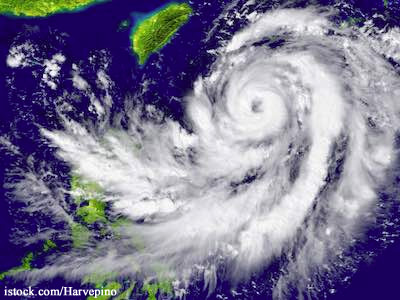The USDA is offering food safety recommendations for those affected by Hurricane Arthur. If you lose power, food could spoil and pathogenic bacteria can grow.
 Keep appliance thermometers in the fridge and freezer. Safe temperatures are 40°F in the refrigerator and 0°F in the freezer. Freeze water in one-quart plastic storage bags or containers before a storm. Water expands when it freezes, so don’t overfill. Freeze refrigerated items, such as leftovers, milk, and fresh meat and poultry to keep them at a safe temperature longer.
Keep appliance thermometers in the fridge and freezer. Safe temperatures are 40°F in the refrigerator and 0°F in the freezer. Freeze water in one-quart plastic storage bags or containers before a storm. Water expands when it freezes, so don’t overfill. Freeze refrigerated items, such as leftovers, milk, and fresh meat and poultry to keep them at a safe temperature longer.
Know where you can get block or dry ice. Fifty pounds of dry ice will keep an 18-cubic-food freezer cold for two days. Have coolers on hand to keep refrigerated food cold if the power is out for more than four hours. Group foods together in the freezer for an ‘igloo’ effect that helps food stay cold longer.
Keep a few days’ work of ready to eat foods that don’t require refrigeration or cooking on hand. Canned beans, fruits, and vegetables, breads, and canned meats are good choices. Remember to throw away leftovers that you can’t chill in the fridge. And make sure that you have a can opener on hand that can be operated without electricity.
Keep fridge and freezer doors closed as much as you can. A refrigerator keeps food safe for four hours; a full freezer will hold temperature for 48 hours, or 24 hours if half-full. Put meat and poultry on one side of the freezer or on a tray in case thawing produces juices that could drip on and contaminate other foods.
When the power goes back on, discard meat, poultry, seafood, eggs, and leftovers that have been above 40°F for two hours. Check every item separately. Never taste food to see if it’s okay because pathogenic bacteria will not change the texture, flavor, or appearance of food. Throw out any food that feels warm to the touch. If frozen food still has ice crystals, it’s safe to re-freeze. And when in doubt, throw it out. It’s just not worth getting sick over a few dollars of food that you wanted to save.




